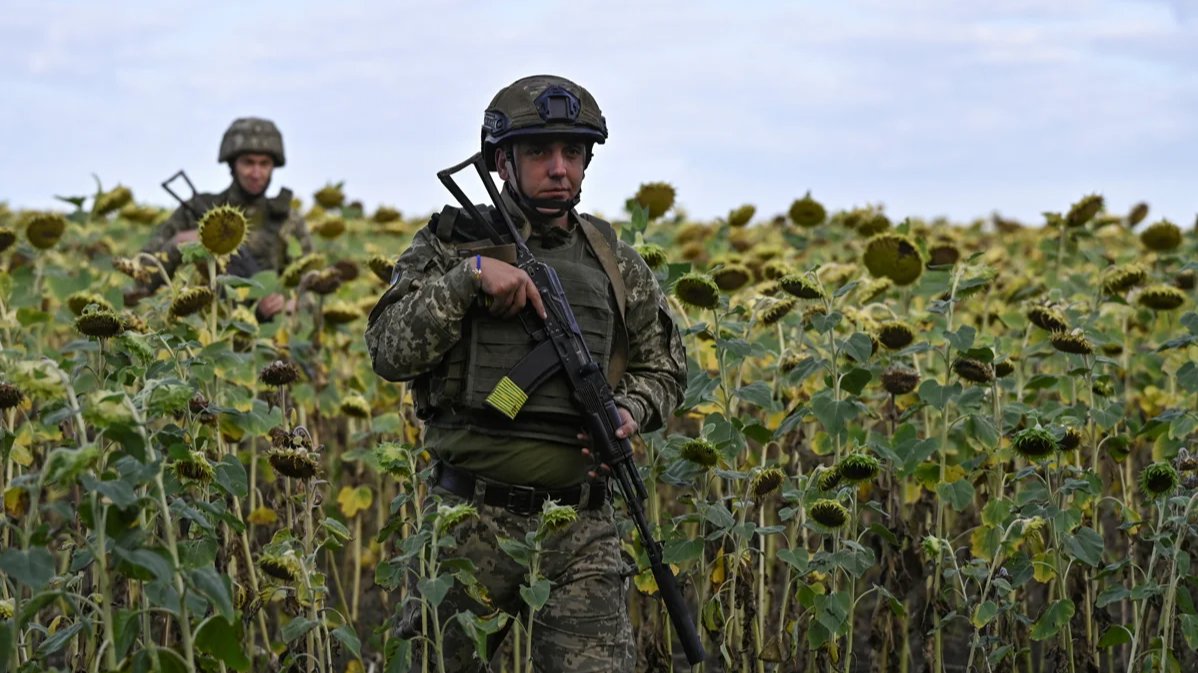Two years ago a major Ukrainian counteroffensive got underway that saw the Armed Forces of Ukraine (AFU) simultaneously attack Russian positions in the Kharkiv, Donetsk and Luhansk regions, liberating large swathes of territory. The Ukrainians attempted to repeat that success at several points along the frontline last summer, but failed. However, last month’s surprise Ukrainian incursion into Russia’s southwestern Kursk region has placed the Russian military on the defensive, even as it continues its advance in Donbas. Novaya Europe compared the three Ukrainian offensives with various military analysts.
Tactical surprise
The AFU’s first counteroffensive began on 6 September 2022, and saw it liberate such cities as Izyum, Lyman, Balakliya and Kupyansk. Russian forces in the Kharkiv region were forced to retreat to Russia’s borders. Five days after the Ukrainian attack began, it was reported that the Ukrainians had retaken control of 8,730 square kilometres of its own territory previously captured by the Russians.
The AFU’s surprise attack took advantage of the fact that Russian formations were lacking in manpower and equipment, Israeli military expert David Sharp explains. “The line of contact proved to be too drawn-out and did not have Russian formations on it at all points. The Russians had already suffered significant losses by this stage. In addition to that, the Russian command obviously underestimated the existing threats and did not give the order to go on the defensive. No one expected that the AFU would be able to attack decisively.”
Russia’s military command would have immediately understood that it lacked sufficient forces to conduct military operations on such a large segment of captured territory.
After breaking through the flimsy Russian defences, the Ukrainian troops moved rapidly into the operational space, Sharp says. The AFU used small units for its initial infiltration of Russian defensive lines, and once those units broke through the first line of Russian positions, they began to threaten the enemy with encirclement, forcing them to choose between fighting to the death or retreating. Opting for the latter, the Russians fled the scene, abandoning military equipment and coming under fire from the AFU.
Russia’s military command would have immediately understood that it lacked sufficient forces to conduct military operations on such a large segment of captured territory. Nevertheless, in May this year, Russia launched a renewed offensive in Kharkiv in an attempt to regain control of part of the region.
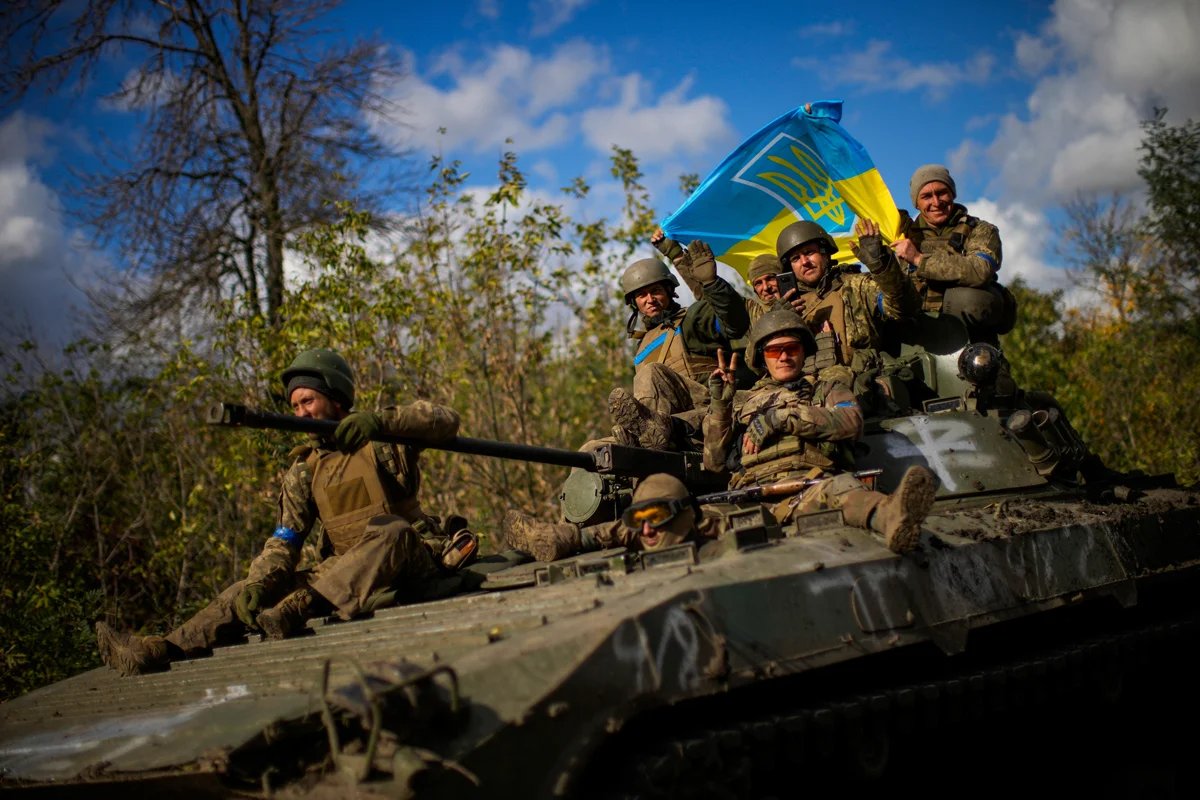
Ukrainian servicemen on the road between Izyum and Lyman, 4 October 2022. Photo: Francisco Seco / AP Photo / Scanpix / LETA
All-round excitement
“The Kharkiv operation gave Ukrainians faith that the AFU was capable of advancing and driving the enemy off their land,” military researcher Kirill Mikhailov told Novaya Europe.
“The Kharkiv operation in 2022 not only enabled the AFU to regain significant territory, but also allowed it to destroy and capture a large amount of Russian equipment. The AFU acquired more equipment than it had lost over the course of combat operations: hundreds of tanks, infantry fighting vehicles and other military hardware were put into long-term service,” he adds.
In addition, the AFU made the Russian military abandon its plans to seize the city of Kharkiv itself, forcing it to retreat, thus also ensuring the cities of Slavyansk and Kramatorsk remained safe from the threat of Russian capture, says Yan Matveyev, a military analyst at the Anti-Corruption Foundation.
Shortly after the offensive, the Russian authorities declared a partial mobilisation of Russia’s military reserve, which led to its forces in Ukraine being replenished with poorly trained recruits. “All this led to the simplification of attack actions. Since then, Russian units have only relied on one technique — frontal assault,” Matveyev explains.
The Kharkiv counteroffensive was the first significant purely military defeat experienced by the Russian army in Ukraine, demonstrating that the AFU was a force to be reckoned with and that it could win battles — something that was a cause for all-round excitement in Ukrainian society as well as in the AFU itself.
As Mikhailov says, it was as a result of the Kharkiv counteroffensive that Ukraine’s Western partners approved the transfer of significant amounts of military hardware to Kyiv, which was subsequently used in new AFU offensives. This was also the reason that the Russian military spent so many months on the defensive during 2023.
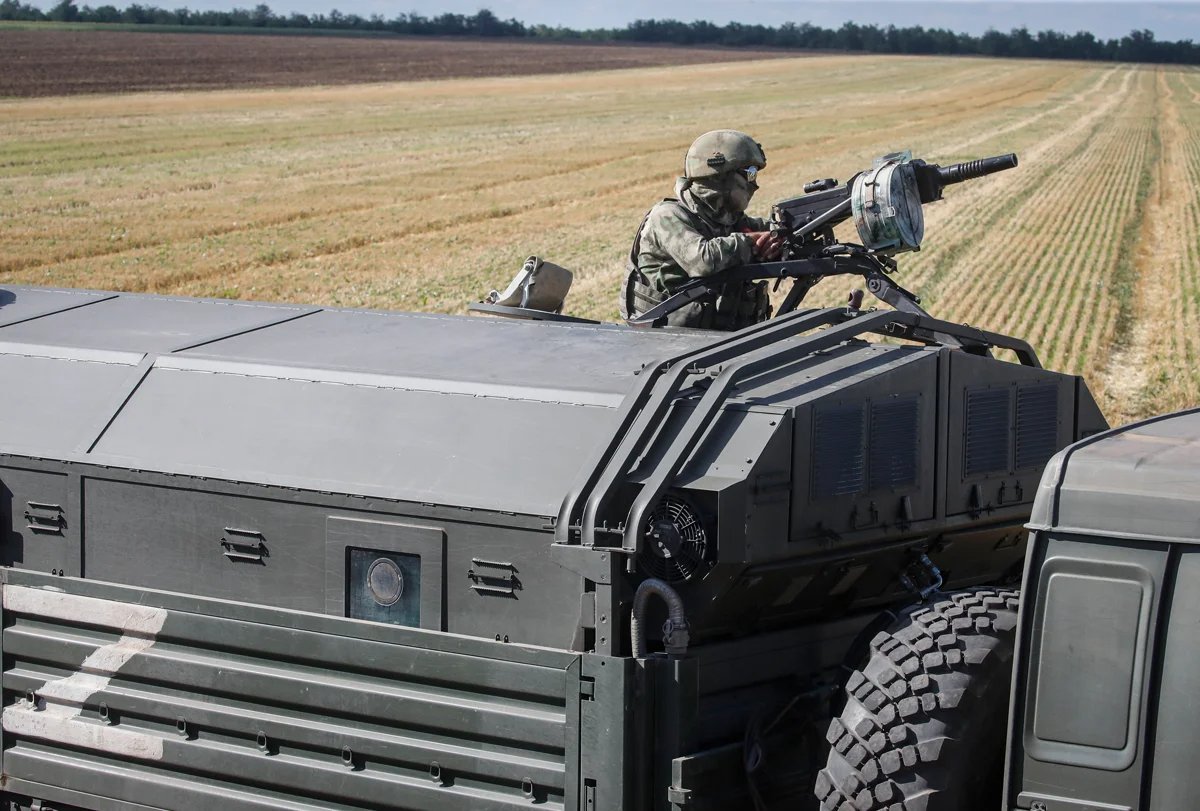
A Russian serviceman in a field close to the city of Melitopol, Zaporizhzhia region, 14 July 2022. Photo: Sergey Ilnitsky / EPA-EFE
A complete failure
“The Ukrainian offensive of 2023 began on 4 June,” says Sharp. “It was preceded by a long period of waiting. Both parties to the conflict and various experts not only knew the probable directions of the attacks, but could also predict the approximate date when they would begin.”
“After having their fingers burned, the Russian generals were very thorough in their preparations for the AFU offensive.”
For this reason, the Russian army had time to prepare, he says. After mobilisation, Moscow was able to replenish its human losses in the first year of war and overcome its personnel shortage, while the length of the frontline was significantly reduced as the Russians had retreated from the city of Kherson and from the right bank of the Dnipro entirely.
“After having their fingers burned, the Russian generals were very thorough in their preparations for the AFU offensive,” he adds. “As a result, the Ukrainians lost the element of surprise, and advanced on a well-entrenched enemy with prepared defensive lines and serious engineering structures.”
Mikhailov agrees that the main reasons for the failure of the second Ukrainian summer offensive was that information about the operation was widely known.
“In the summer of 2023, the AFU came up against a strong Russian defence,” says Yan Matveyev. “They were unable to break through and enter the operational space to capitalise on their mobility advantage.”
“The Russian army was ready for attacks on the Zaporizhzhia front: this direction was too obvious. The division of forces for attacks in several directions also played a role, if not a decisive one”.
In practical terms, according to Matveyev, the AFU lacked the necessary equipment for mine clearance, as well as that for creating breakthrough cover such as smoke screens, artillery support and air superiority. Instead, they relied on military hardware such as Leopard 2 tanks and Bradley infantry fighting vehicles, but this equipment came under fire from Russian helicopters.
As Sharp says, the planning and execution of the 2023 operation left something to be desired. In many areas, newly formed AFU units were thrown into battle. These units, which had received Western weapons and had undergone intensive but insufficient training, had no combat experience. As a result, they were unable to carry out an offensive against a well-entrenched enemy. Experienced units replenished with fresh soldiers and retrained with new weapons would probably have been more useful in this case.
Another criticism of the Ukrainian command during the 2023 operation was that despite it being clear that the offensive had failed, attempts to break through the Russian defences continued. As Sharp says, then-AFU Commander-in-Chief Valery Zaluzhnyi and Oleksandr Syrskyi, the commander of the AFU’s ground forces at the time, kept insisting that just a little more effort was needed to achieve the minimum result: for example, the capture of the embattled cities of Tokmak or Bakhmut. However, it soon became clear that this was not the case.
“The futile offensive should have been stopped earlier without wasting valuable and limited resources,” Sharp says. “Both equipment and personnel were lost. Their subsequent lack made itself felt during the Russian offensive of 2023-2024.”
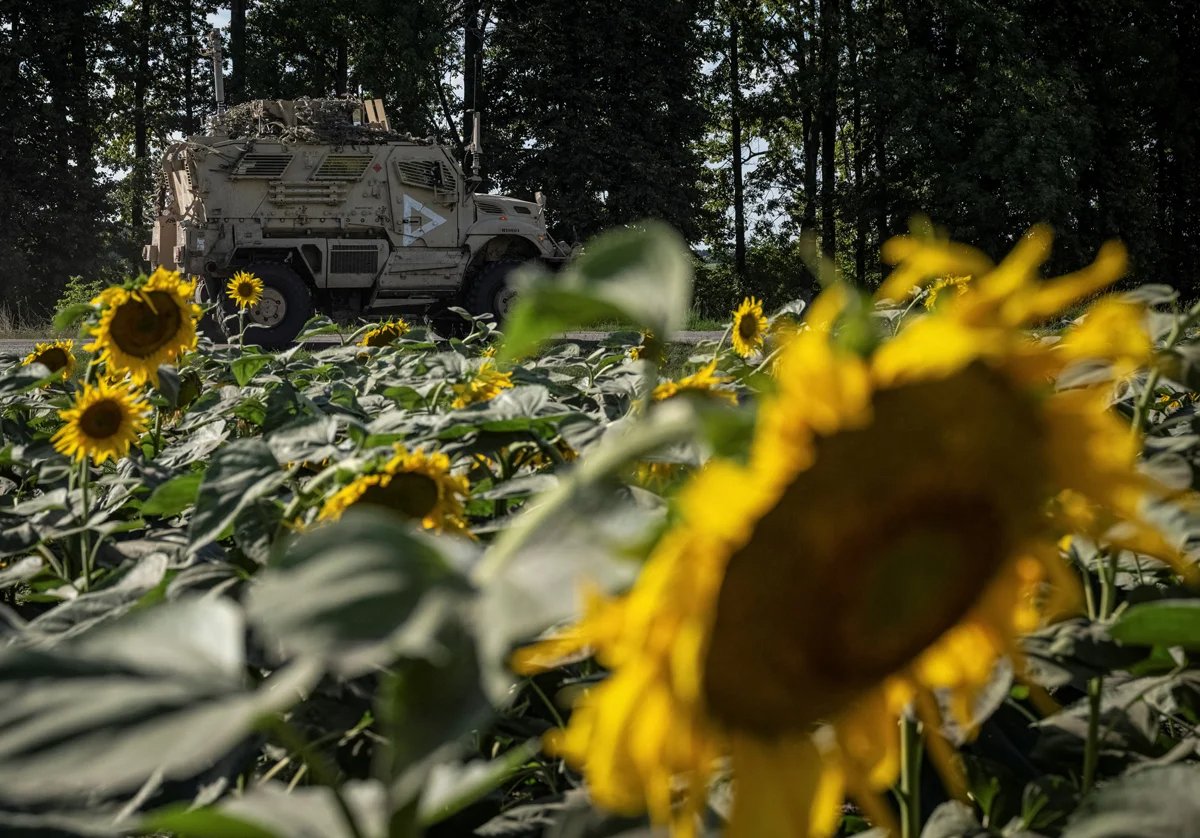
Ukrainian servicemen near the Russian border in the Ukrainian city of Sumy, 16 August 2024. Photo: Vyacheslav Ratinsky / Reuters / Scanpix / LETA
Lightning-fast success
During Ukraine’s incursion into the Kursk region, which began on August 6, the AFU managed to capture almost 1,300 square kilometres of Russian territory and about 100 inhabited settlements, according to Oleksandr Syrskyi, who in February was named as Zaluzhnyi’s replacement.
Mikhailov says that in the Kursk operation, Ukrainian counterintelligence did an excellent job concealing the AFU’s preparations for such a large-scale attack on Russian territory. Redeploying troops to the Sumy region’s border with Russia was realistically disguised as defence against an expected Russian offensive. Russian military intelligence either overlooked the concentration of the enemy’s military forces or failed to convey the information to the Kremlin. Clearly, the Russian military high command viewed the risk of a Ukrainian attack on Russian territory as highly unlikely.
“The AFU showed that in modern warfare it is possible to attack quickly, boldly and unexpectedly for the enemy, ensuring almost lightning-fast success.”
“In the Kursk operation of 2024, the AFU was able to debunk the widespread myth that in modern warfare it is impossible to concentrate significant forces for a strike in a relatively small area without the enemy noticing,” Sharp says, adding that as a result, the Ukrainians were able to achieve an element of tactical surprise, just as they did in the 2022 counteroffensive.
“The AFU showed that in modern warfare it is possible to attack quickly, boldly and unexpectedly for the enemy, ensuring almost lightning-fast success,” Mikhailov agrees. “It is already clear that by entering Russian territory, the Ukrainians were able to replenish the prisoner exchange reserves by capturing 594 Russian soldiers.”
Although there was no large-scale transfer of Russian units from the frontline in Donbas to the Kursk Region, the AFU offensive provoked a crisis in Russia’s border regions, where tens of thousands of residents had to be evacuated, and raised the AFU’s morale across the entire line of contact, Mikhailov says.
However, according to Yan Matveyev, it is too early to talk about the outcome of the Kursk operation and its impact on the course of the war. While Putin and his staff are prioritising the offensive on the Donetsk front over the defence of Russian territory, that approach will likely create significant problems for the Russian army down the line, Matveyev says.
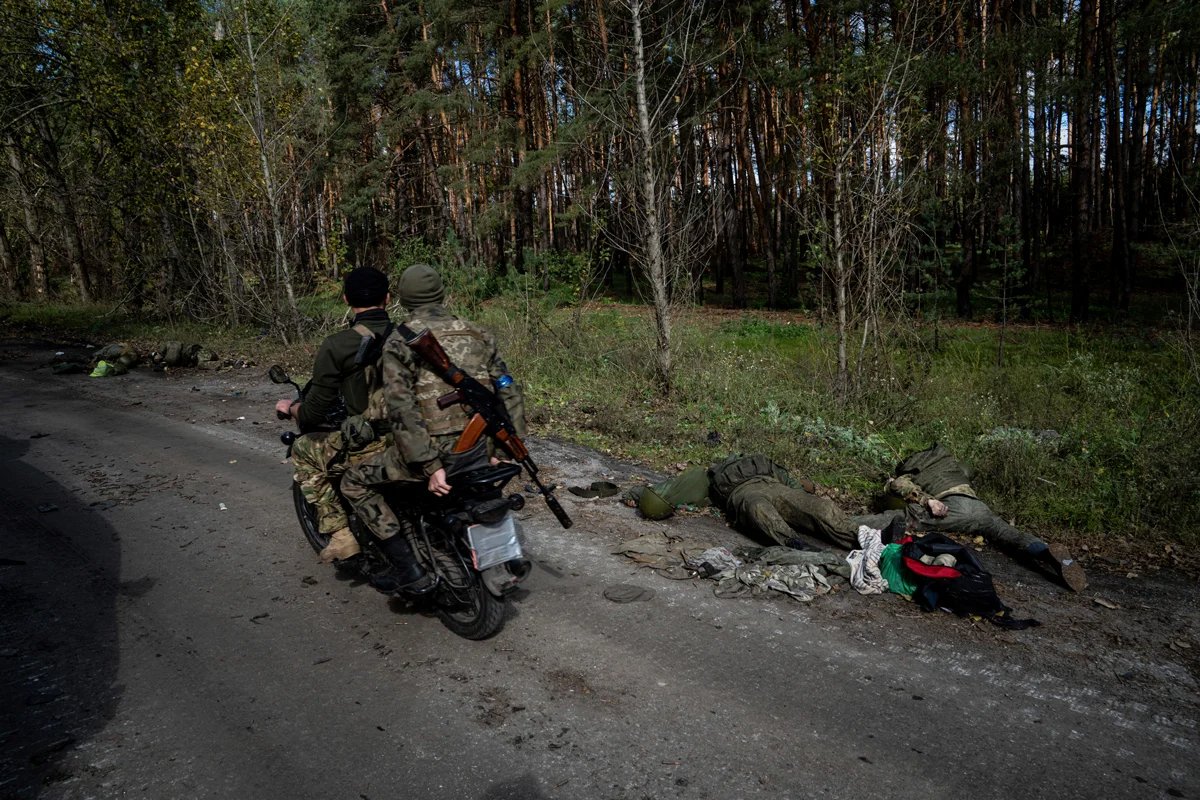
Ukrainian servicemen driving past the bodies of Russian soldiers, Lyman, Ukraine, 3 October 2022. Photo: Yevgeny Maloletka / AP Photo / Scanpix / LETA
Manoeuvre warfare
Both Russia and Ukraine have often been on the offensive during the war. However, their operation tactics differ. “The Russian Armed Forces are worse at manoeuvre warfare than their opponent,” Mikhailov says. “This is because the Ukrainians have better communications between units and better trained mid-level commanders. In the Kursk region, they managed to confuse the enemy with a surprise attack, destroy his defences, and capture prisoners and trophies. Whereas the Russians, who have considerably more resources, prefer to conduct a mass positional offensive on the frontline, gradually but constantly grinding down their own and the enemy’s manpower and equipment”.
“Even if two Russian soldiers are killed in the military meat grinder for one Ukrainian soldier, the score will still be in Russia’s favour. Russia simply has numerical superiority,” he adds.
Matveyev says that the AFU relies on using small combat units in battle. The Russian army attacks with infantry units or large armoured columns. The AFU’s advantage lies in its quality, whereas the Russian military relies more on quantity. For this reason, successful attacks by the AFU are less frequent, but they achieve greater results in proportion to the forces involved.
“Cannon fodder assaults and the destruction of settlements are a consequence of tactical stalemate on a dense frontline,” says Yan Matveyev. “These tactics are mostly used by the Russian army, where commanders do not value the lives of soldiers and are ready to trade hundreds of dead troops for metres of captured territory.”
“Normal offensive operations are possible, but first we need to achieve a frontline breakthrough. The AFU in Donbas lacks the resources for this, while the Russian army lacks the training and the required amount of high-quality weapons,” Matveyev notes. “Additionally, the Russian command under Putin’s leadership places the tactics of putting constant pressure on AFU defences over attempts at making a breakthrough and conducting manoeuvre warfare. Simply because of its low level of training and lack of mobile equipment, the Russian army will not be able to fight this kind of war properly and will not gain much advantage from a frontline breakthrough. This is what we saw in the Kharkiv region”.
Comparing losses
“Unfortunately, real losses are difficult to estimate. This is especially true of personnel,” says Matveyev. “As for the loss of equipment, I can say that during the AFU offensives in the summer of 2023 and the Russian offensive in the winter-spring of 2023-24, the attackers lost three to four, or even five times more tanks and armoured vehicles than the defenders.”
In 2022, by contrast, the attackers suffered relatively low equipment losses, Matveyev adds. “The Balakliya-Izyum operation involved a series of manoeuvre battles and quick attacks by mobile groups without powerful resistance from Russian forces or heavy battles. Hence the low casualties.” While in the Kherson region, there was no battle, as the Russian troops were ordered to retreat, he says.
Mikhailov argues that in manoeuvre operations, such as the Kursk offensive by the AFU, the losses of the advancing side are by no means always greater than those of the defending side. The events of August showed that it’s possible to defeat a numerous enemy with relatively small forces without suffering heavy losses.
